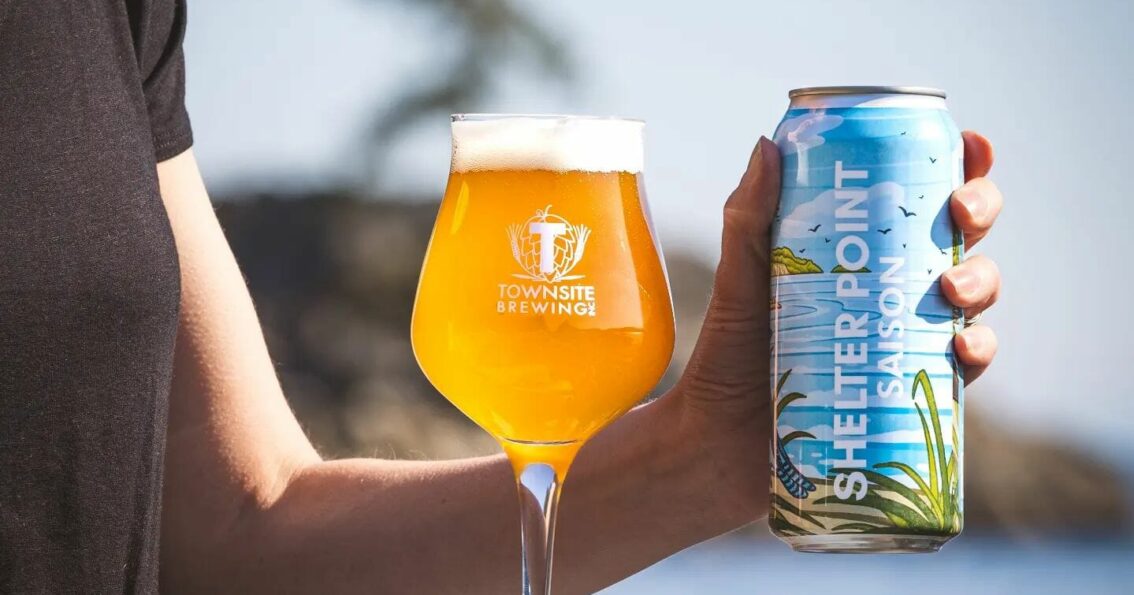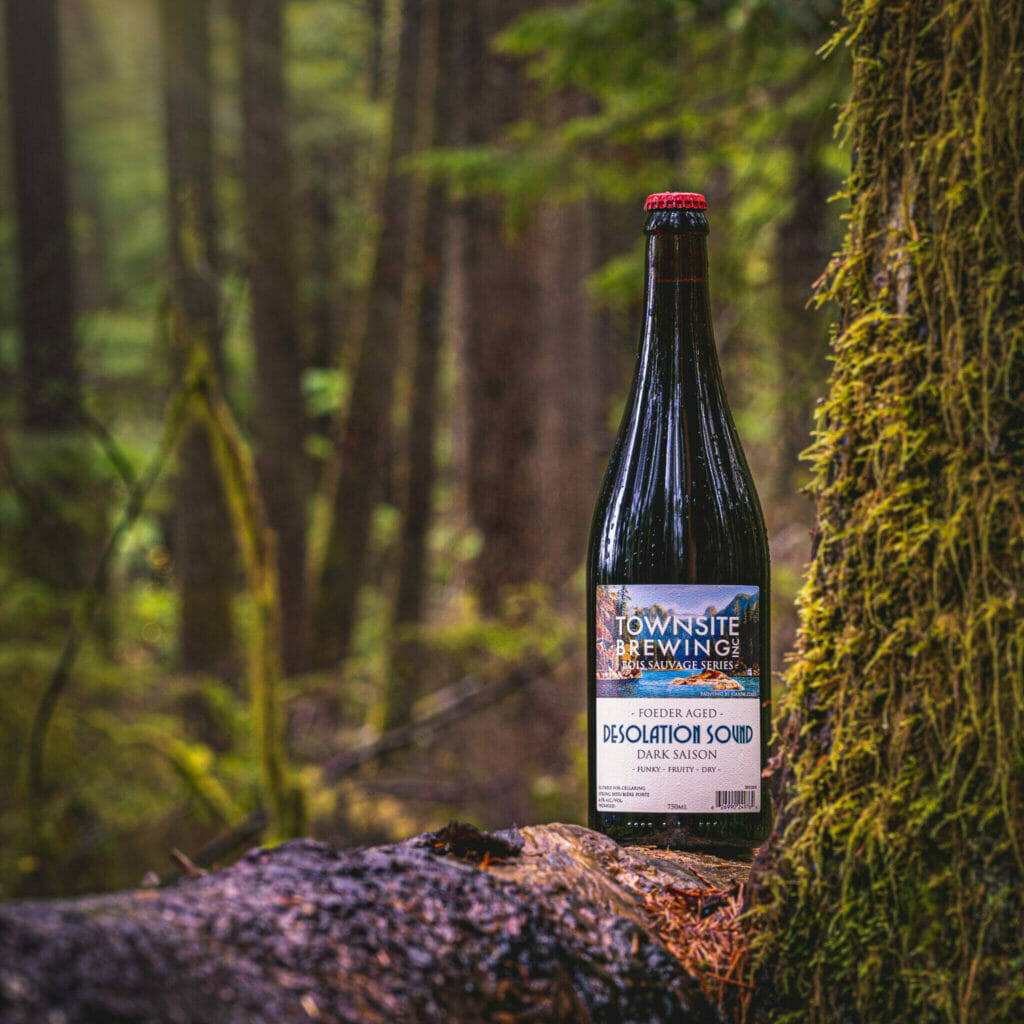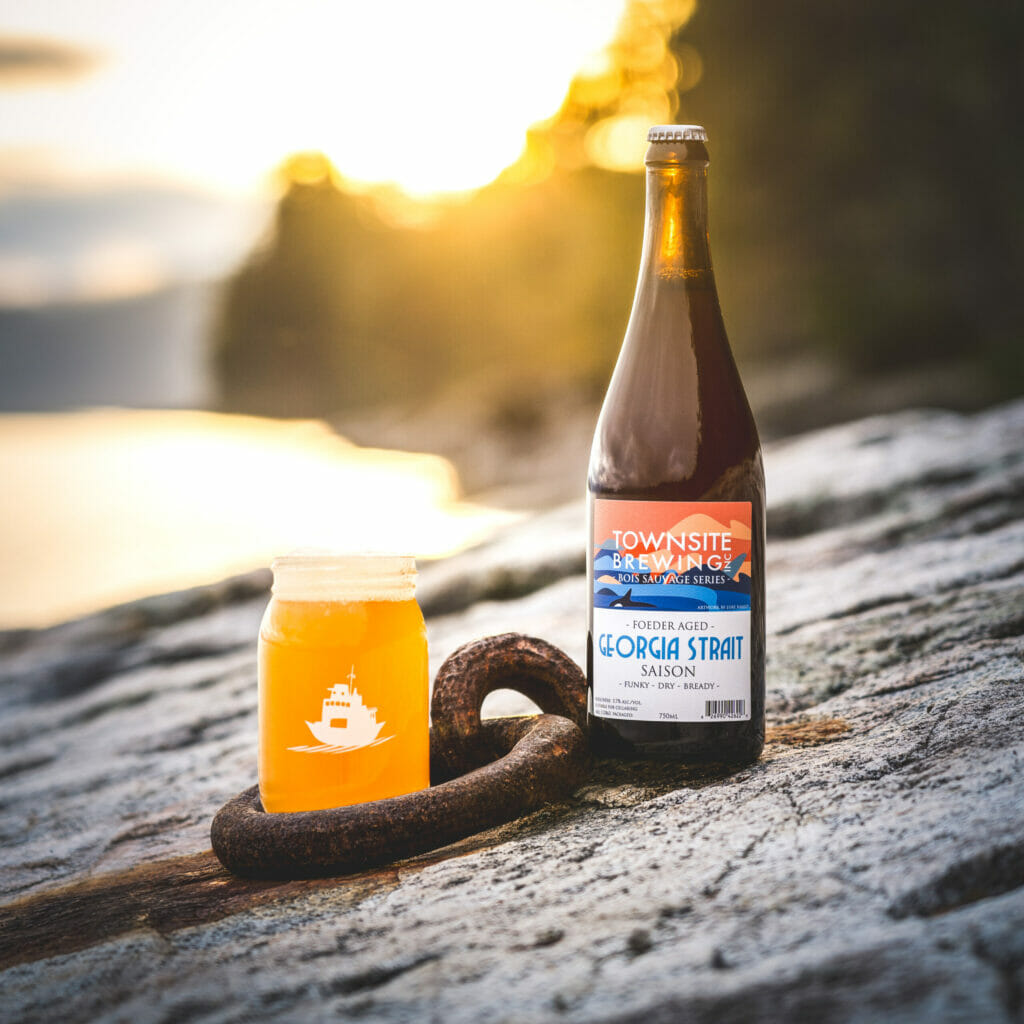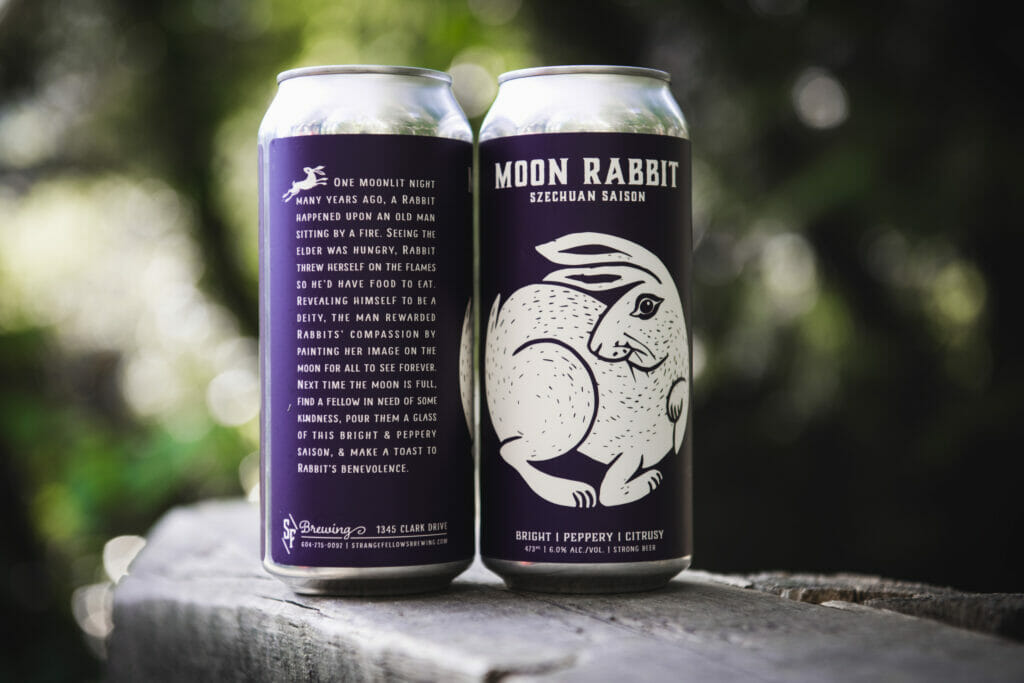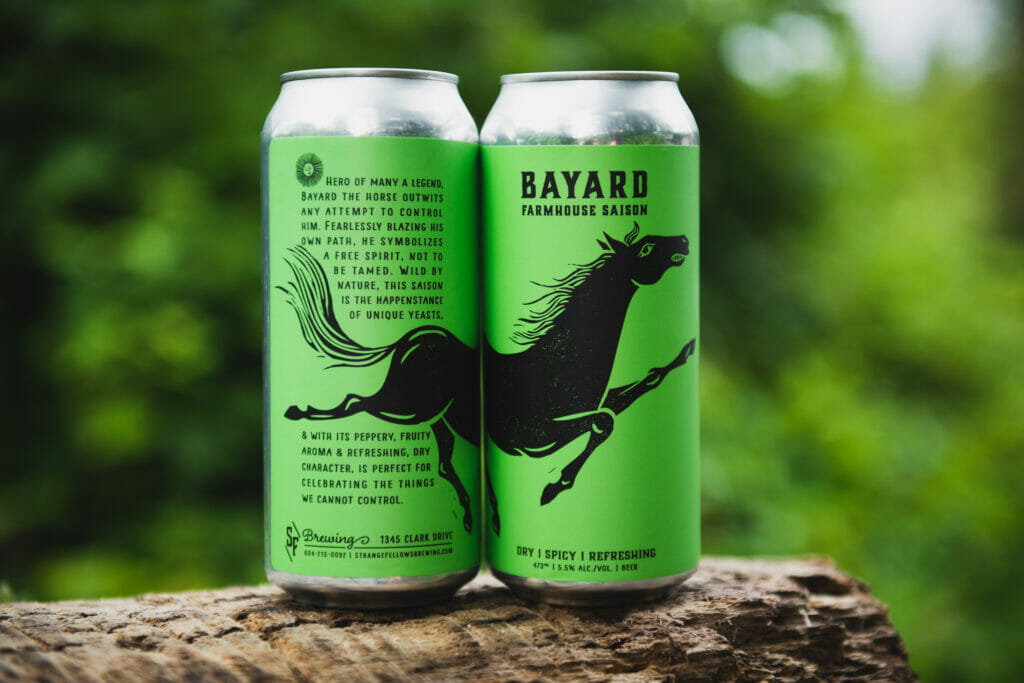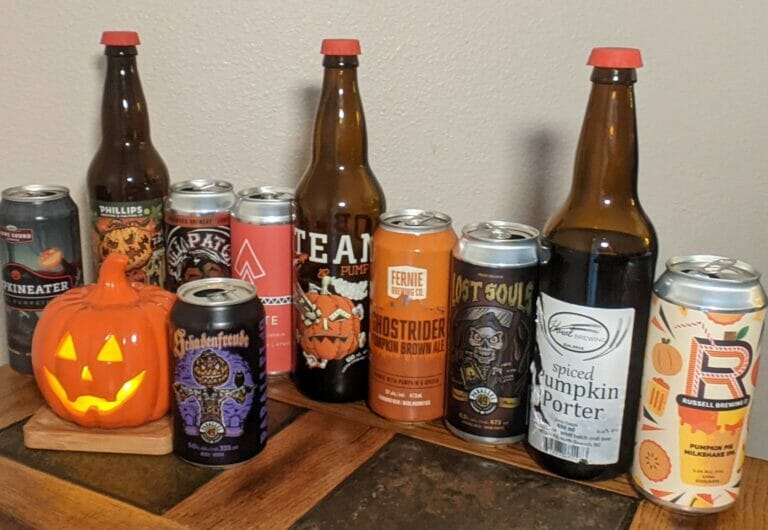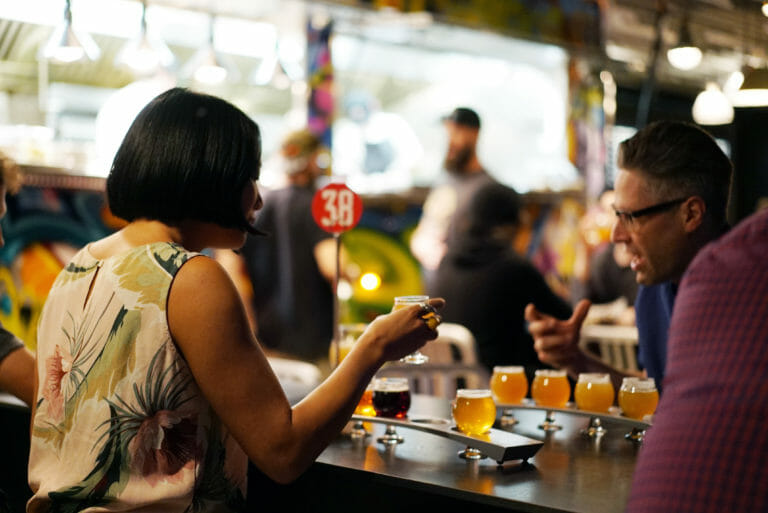Saison is a Belgian-style ale with a unique flavour profile and an interesting historical legacy.
In a flight of beers, a saison will stand out as elegant and effervescent, almost like champagne. These days it is even more popular in North America than it is in its country of origin.
The Beer Judge Certification Program guidelines describe saisons like this:
- A family of refreshing, highly attenuated, hoppy, and fairly bitter Belgian ales with a very dry finish and high carbonation. Characterized by a fruity, spicy, sometimes phenolic fermentation profile, and the use of cereal grains and sometimes spices for complexity. Several variations in strength and colour exist.
- The pale, standard-strength version is like a more highly-attenuated, hoppy, and bitter Belgian Blond Ale with a stronger yeast character. At super strength and pale colour, similar to a Belgian Tripel, but often with more of a grainy, rustic quality and sometimes with a spicier yeast character.
- Typical saisons are brewed to around 6% ABV with a hop presence of 20-35 IBU.
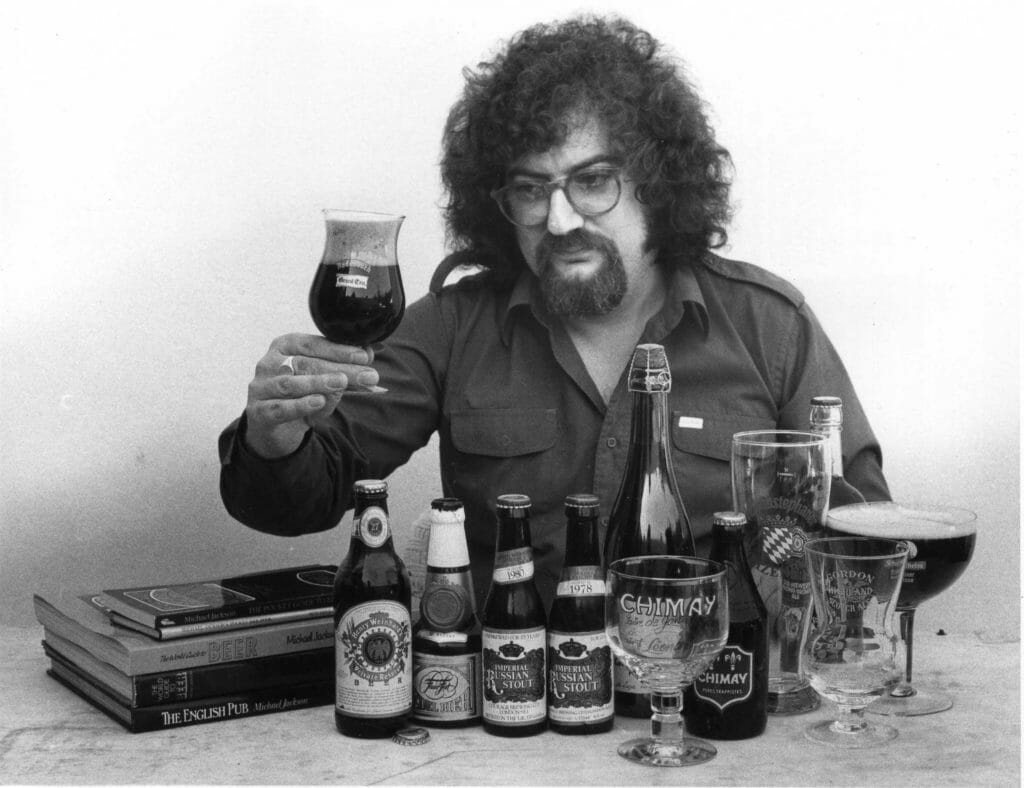
When the famed British beer writer Michael Jackson first began writing about Belgian beer culture in the 1970s, he found very few examples of saisons in existence. By the early 1990s, he even described the style as “endangered.” But he loved saisons and worked hard to bring attention to them. Because of his enthusiasm, an American distributor reached out to the Belgian brewer Dupont to import its saison, described by Jackson as “a down-to-earth classic of the style.” Dupont was surprised by the request since their blonde ale, Moinette, was a much bigger seller in Belgium.
“At the time, the [saison] represented just two percent of Brasserie Dupont’s sales and was being considered for discontinuation,” Bryan Roth wrote in All About Beer in 2016, going on to state that the saison now accounts for 40% of Dupont’s production because of the export market.
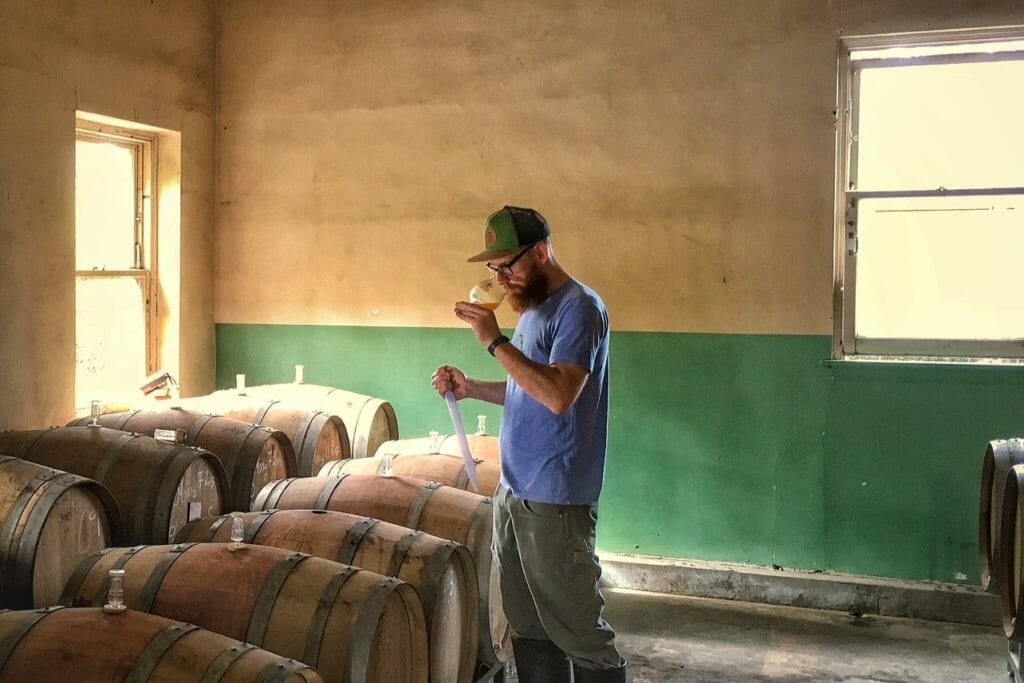
The Belgian Connection in BC
Cédric Dauchot, brewer and co-owner of Townsite Brewing in Powell River, grew up about 35 km from the Dupont brewery, but despite its proximity, Dauchot says, “I never drank saison Dupont at the pub. We always drank Moinette. Saisons were not a big part of beer culture in Belgium.”
On my own trip to Belgium in 2014, I sought out saisons at every pub and brewery, but the truth was I only encountered them here and there. I did, however, experience one of my all-time favourite food-and-beer pairings on that trip when I picked the Dry-Hopped saison from Dupont to go with salted Gruyere cheese at Nüetnigenough, which describes itself as “the Brussels brasserie for greedy gluttons and fine beer lovers,” or, in other words, me!
According to legend, saisons were originally brewed by farmers in the winter months and then stored away for the summer when they were consumed in great quantities as sustenance by the saisoniers, or seasonal workers, hired to help with the harvest. It’s a great story, one I’ve told many times at beer tastings and seminars, and people always love it when they hear it. However, as with many beer origin stories, it’s probably a little too tidy to be true. Check Dutch beer writer Roel Mulder’s site, Lostbeer.com, for a few articles devoted to debunking the myth if you’re interested.
When I asked Cédric Dauchot about the origin story, he said it might have been true “maybe 100 years ago,” but with a twist: “There was a communal brewery in every village. Every farmer would have a couple of wood barrels and fill them and then tap them for the workers in the summer.” He remembers that his father worked on a farm in the 1960s “and there were some beer barrels there, but that was one of the last farms in the area to do that.”
Saisons can vary considerably from brewery to brewery, but many people, including myself, regard the saison Dupont as the benchmark and measure other versions against it. And I love Michael Jackson’s description of it: “A big, rocky, creamy head; a sharp, firm, refreshing attack; a restrained fruitiness; and a long, almost tangibly dry, finish.” That “firm, refreshing attack” makes me smile because it’s bang on even if it isn’t the usual way to describe a beer.
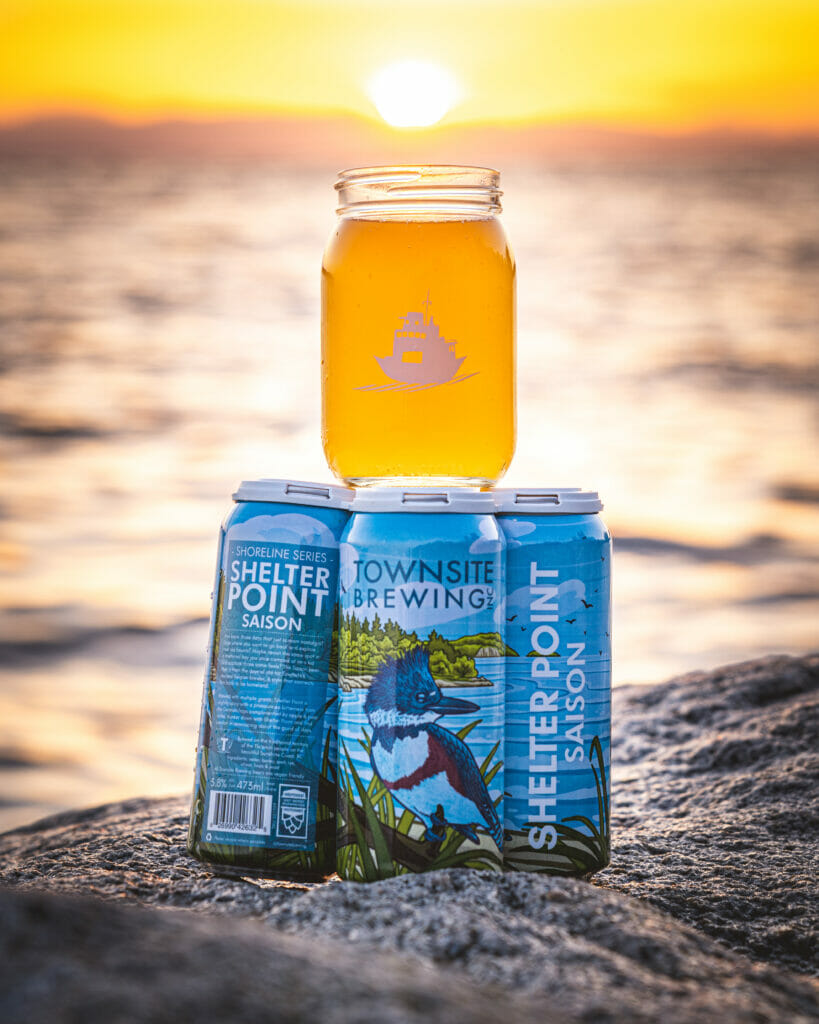
Townsite Brewing’s original saison was called 7800 saison, so named for the distance between Dauchot’s hometown and Powell River. In recent years, the beer has been updated and rebranded as Shelter Point saison, but it remains a classic of the style reminiscent of the Dupont standard. He uses the traditional Belgian saison yeast, which he believes is a clone of Dupont’s, and several different grains, including spelt, oats, rye, and raw, unmalted wheat along with barley.
“I like all the flavour that comes from the grains. And the yeast must be present: a lot of peppery esters. And a dry finish. It’s a thirst-quenching beer for sure.”
Townsite brews several batches of it in February and March so that it is ready in the spring and summer —“exactly like the tradition.”
“The fermentation is usually at 30-32 C—the fermenter feels like there’s blood inside. You get lots of esters, bubblegum notes.” The result is a complex beer, to be sure, but when all those flavours are balanced, the result is very special.
Townsite also makes two other specialty saisons that are aged in a foeder to give them extra depth and character:
- Georgia Strait Foeder-Aged Saison (5.7% ABV)
- Desolation Sound Foeder-Aged Dark Saison (6.5% ABV)
Beyond Townsite, many other BC breweries make saisons, whether as mainstays in their lineup or season releases.

Dageraad Brewing, the Burnaby brewery founded in 2014 with a focus on Belgian-style beers, makes several different saisons on a seasonal basis. One of their regular summer seasons is Field Theory, a dry-hopped saison (4% ABV).
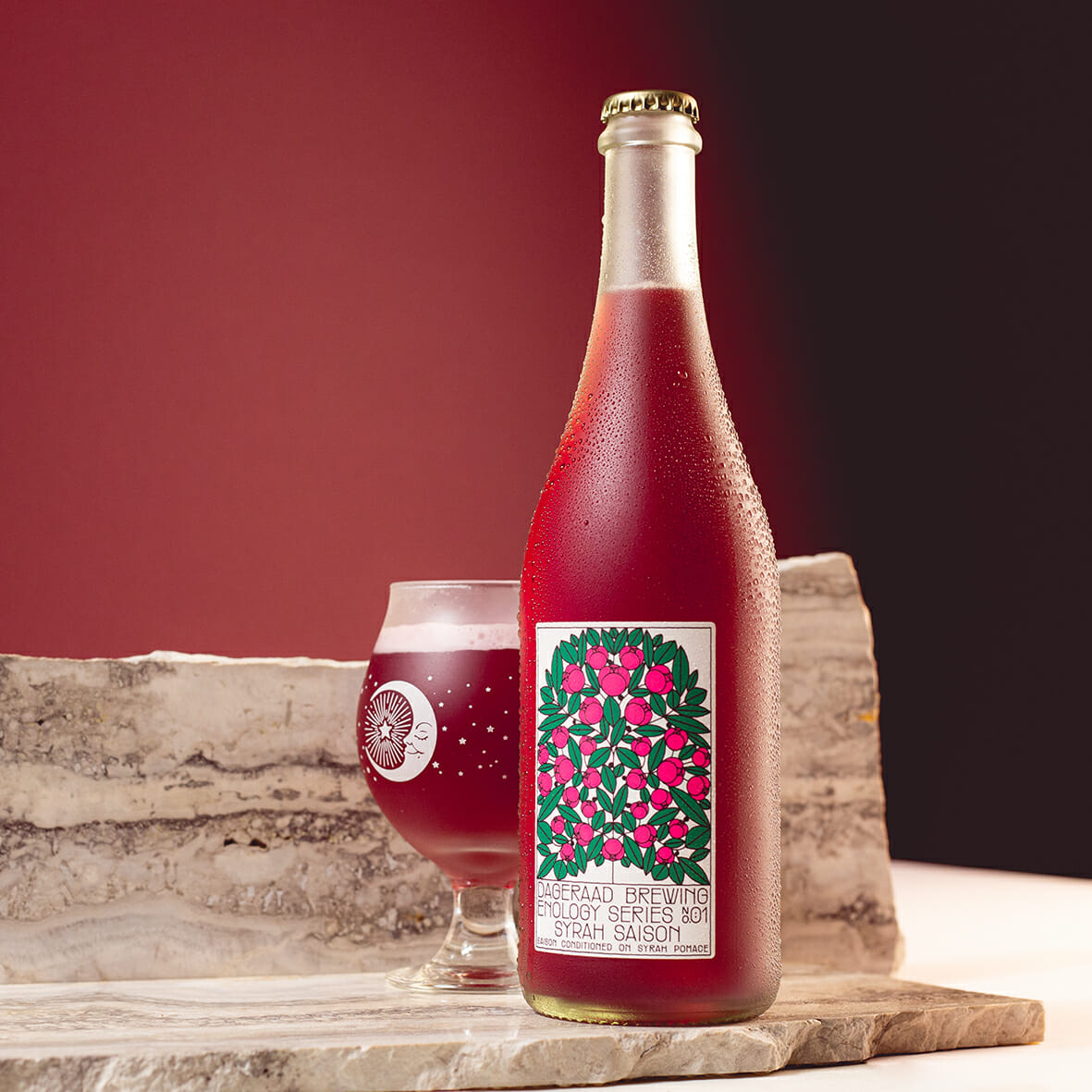
For Dageraad’s anniversary in May, the brewery will release three different interesting versions:
- Negen: A bière du coupage, a blended saison, part of which was fermented with a mixed culture for half a year, and then blended with fresh saison and dry hopped before bottling.
- Enology Series No. 2 Petit Verdot: A blend of barrel-aged mixed culture saison that sat for a time on petit verdot must (2023 version similar to the 2022 version pictured above).
- Tous les Jours: Brett saison (3.2% ABV) first released in bottles, now coming out in cans.
Saison Styles
Complex, “rustic” versions of saisons are often described as “farmhouse ales.” If you are wondering what constitutes a farmhouse ale, this article by Seth Levy might help clarify the matter. In a nutshell, it argues states that saison is a member of the “farmhouse family”:
To provide a definitive answer to the question: All saisons are farmhouse ales, but not all farmhouse ales are saisons. The term “farmhouse ale” is an overarching classification, encompassing and unifying many unique substyles of beers, including “funky” styles like saison, sahti, gotlandsdricka, biere de garde, and others. Think of the farmhouse ales as a family — with each member sharing two vital family traits: flavour and origin.

Brett Saison
A unique class of saisons is brewed with the addition of brettanoymces yeast. These “brett saisons” are purposefully aged for months following inoculation with this funk-producing yeast that conventional breweries typically avoid for fear of their regular beers becoming infected by it. But when used properly, it creates a spectrum of flavour in saisons that seems nearly unlimited in depth and complexity.

Super Saisons and Grisettes
Super saisons are basically bigger, stronger saisons (higher than 7% ABV) while another version, grisette, is a lighter, low-alcohol version of the traditional season. It’s a little less common but you will see it appear occasionally on BC brewery taplists.

Saisons from BC breweries to try:
Brassneck Brewery: Joe’s Barn, Sticks & Stones Rye Saison, Stockholm Syndrome Brett Saison
Driftwood Brewery: Viewfield Brett Saison
Four Winds Brewing: Saison, La Maison Wild Saison, Operis Brett Saison, Sovereign Super Saison
Strange Fellows Brewing: Bayard Farmhouse Saison, Mistral Riesling Saison, Moon Rabbit Szechuan Saison
Whitetooth Brewing: Saison des Moustiques

